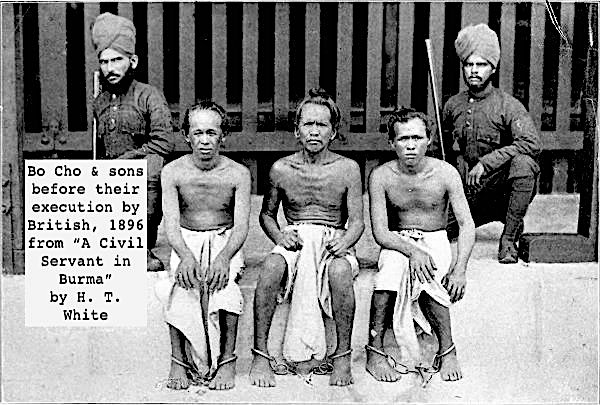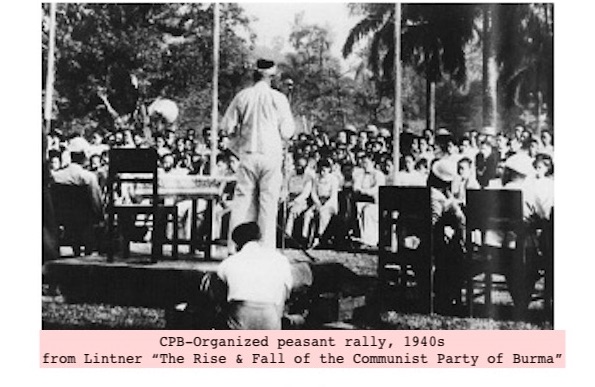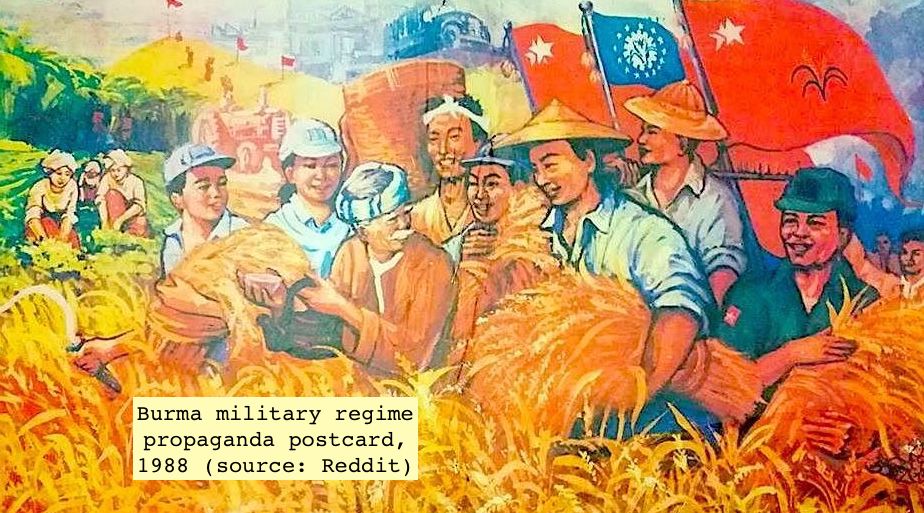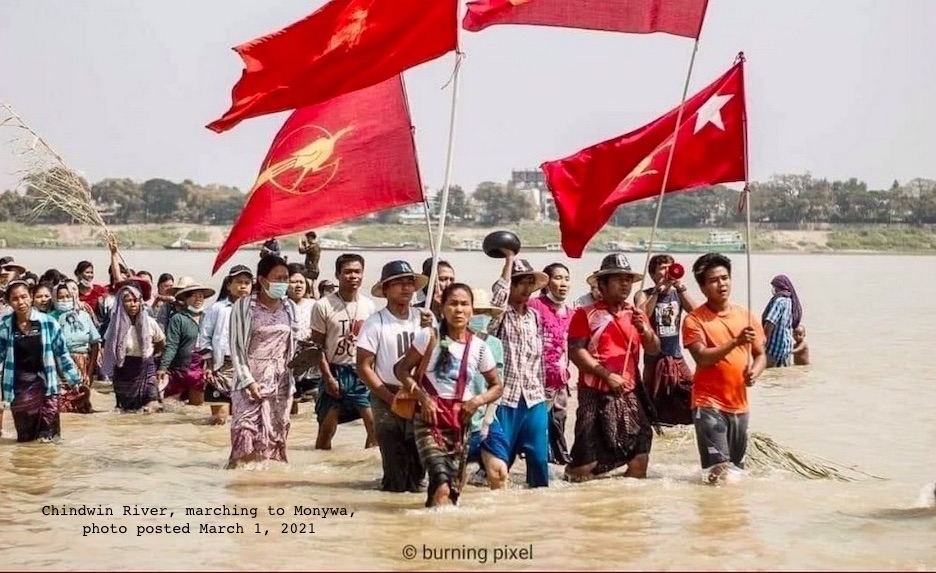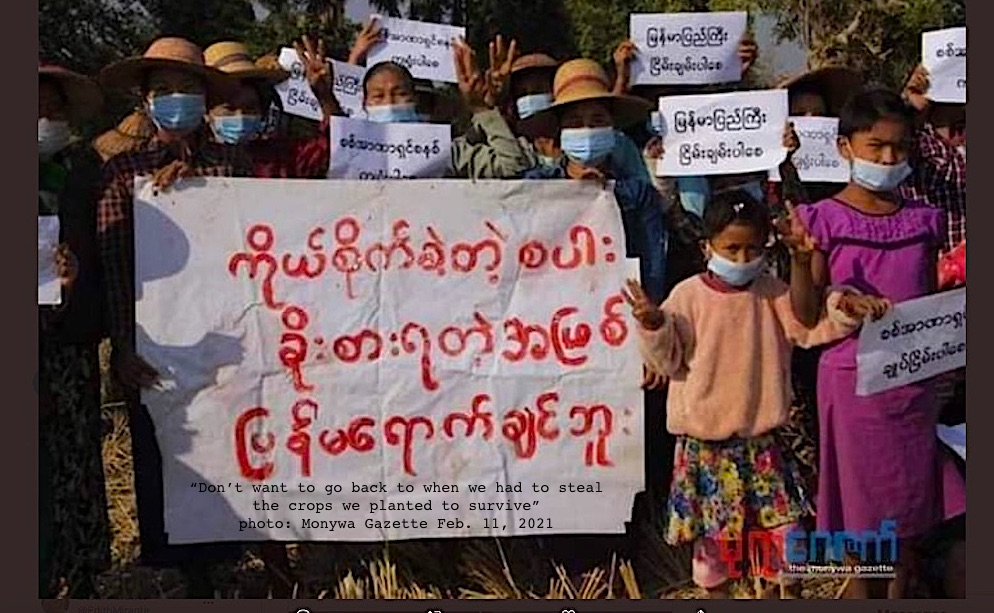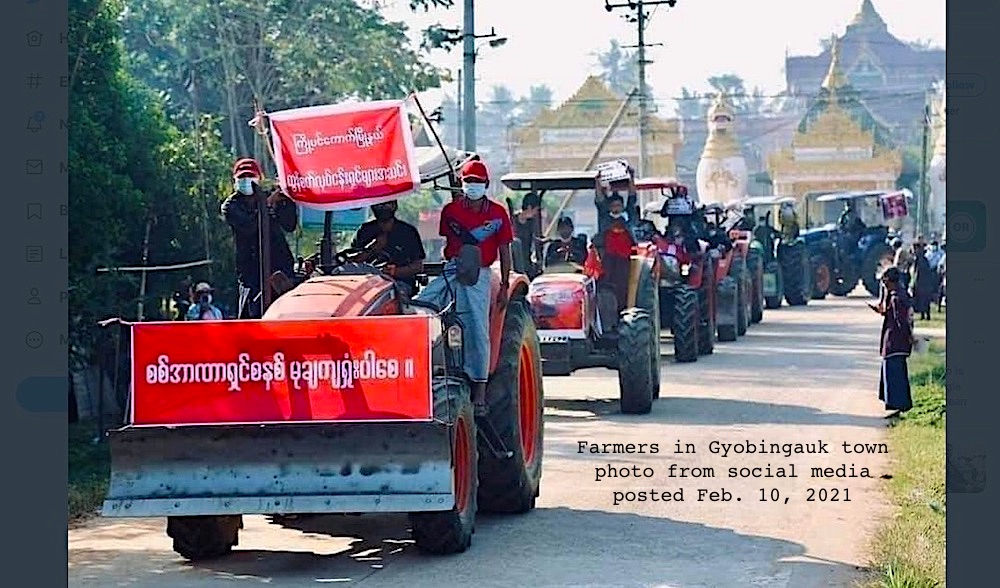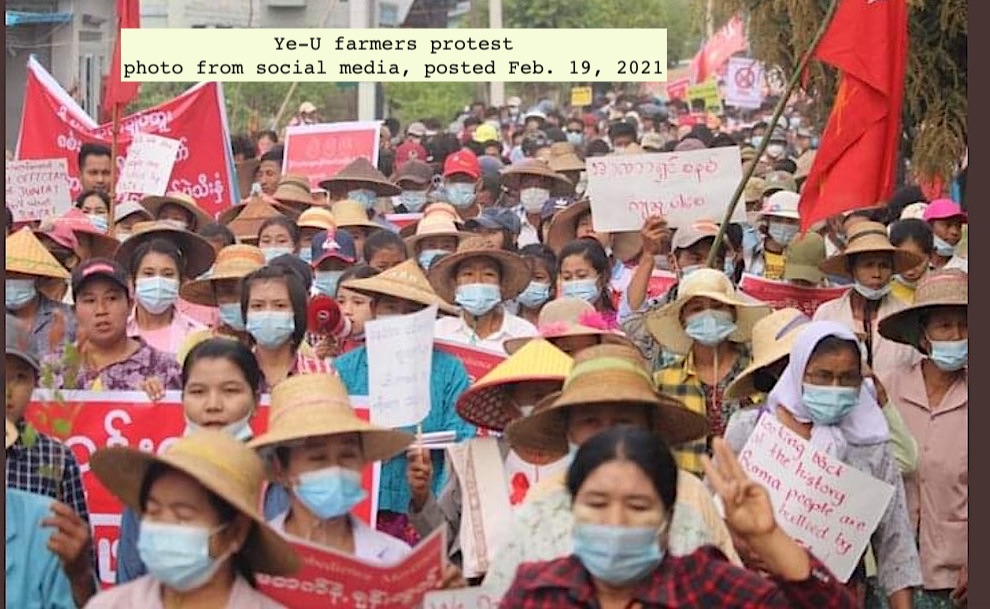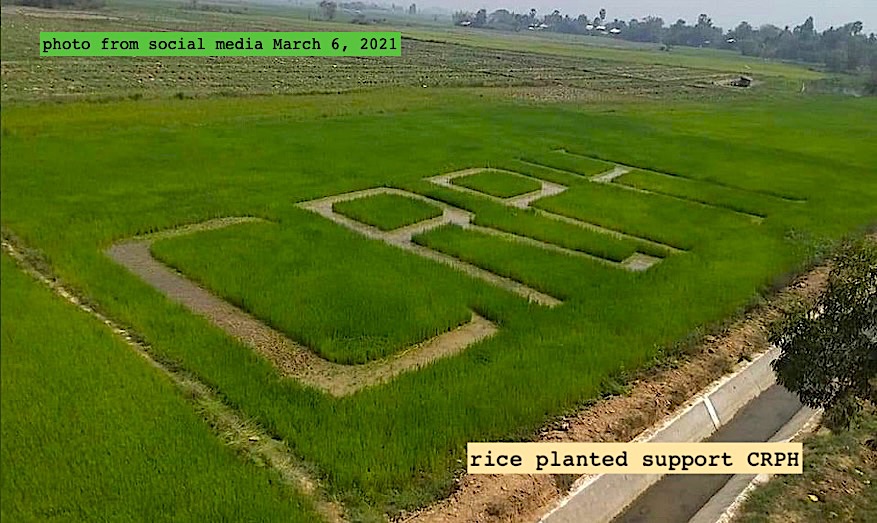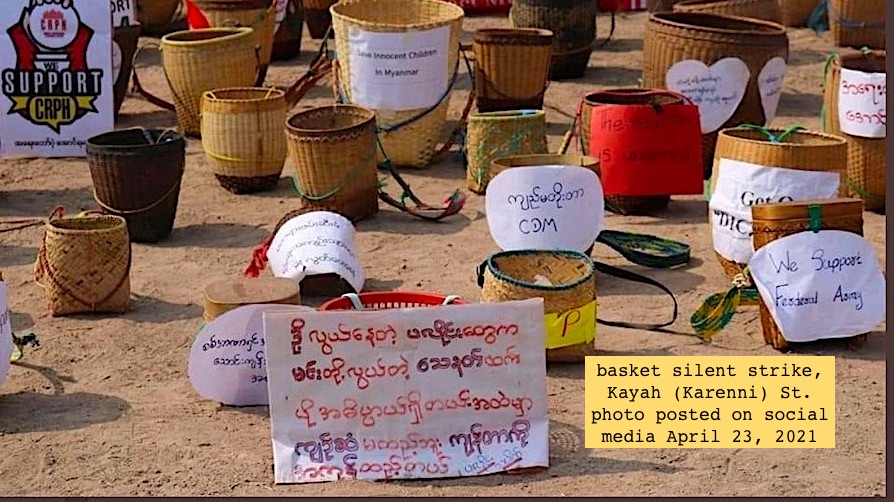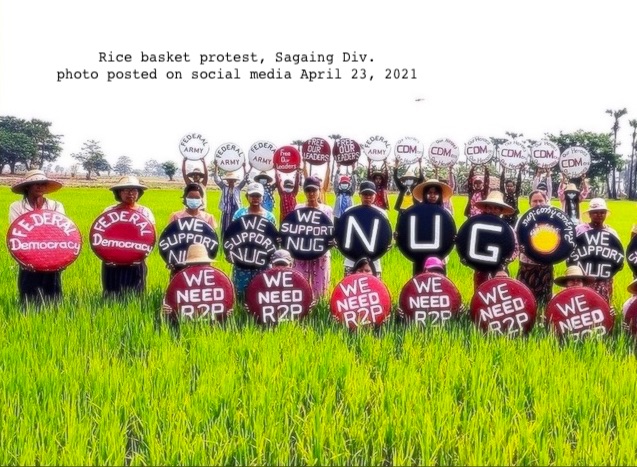1. This (May Day) History Thread is about Agricultural Workers& #39; Uprisings in Burma (Myanmar) which has a long background of peasant rebellions. With workforce est. 70% agriculture employed rural resistance to Feb. 1, 2021 coup is extremely significant. #WhatsHappeningInMyanmar  https://abs.twimg.com/emoji/v2/... draggable="false" alt="🌿" title="Kräuter" aria-label="Emoji: Kräuter">
https://abs.twimg.com/emoji/v2/... draggable="false" alt="🌿" title="Kräuter" aria-label="Emoji: Kräuter">
2. As rulers rose and fell in lands that would become Burma, peasants who worked the land used various strategies to avoid or fight oppression. Usually fleeing was best option, but anything from marches w. petitions about unjust taxation to arson or armed raiding might be tried.
3. 1880s Britain conquered lands forming Burma. Peasant unrest constant due to tax & land ownership changes. British prioritized increase rice production to export. Some farmers refused to plow or joined bands of raiders. 1888 monk-led peasant rebels cut telegraph lines, railway.
4. Peasant unrest continued in colonized 20th C. Burma. 1930-31 taxes & other economic stress rallied thousands of peasants led by charismatic Saya San against British. Village associations organized armed resistance, sabotage until Saya San executed, 1,300 killed in suppression.
5. When Burma became independent after WW2, U Nu government faced armed opposition. Communist armed groups fought for land redistribution. Ethnic Armed Organizations including Karens recruited farmers especially in important rice growing Delta region.
6. After Ne Win 1962 coup, peasant propaganda & land reform promises but farmers forced to sell rice to regime at low price. They resisted by decreasing production, illicit market, export smuggling. Forced relocations, forced labor = ethnic rural areas increased armed resistance.
7. This is a link to another History Thread which I posted in Jan. 2018: “Rice, Rakhines and Rohingyas.” It’s about how decades of agricultural abuse has shaped Arakan (Rakhine St.) economy/politics/life. Many other examples of this throughout Myanmar. https://twitter.com/EdithMirante/status/956422269458309120">https://twitter.com/EdithMira...
8. Recent years: farmers suffered land grabs for plantations, factories, mining, military. Changes to laws jeopardized land rights. Farmers have protested land grabs, environmental damage with marches, occupation, roadblocks, sabotage. Some formed unions. https://www.irrawaddy.com/news/burma/govt-duty-solve-kayah-farmers.html">https://www.irrawaddy.com/news/burm...
9. Soon after Feb. 1 coup in Myanmar as people took to the streets of major cities, rural areas rose up against the coup as well, preventing any regime divide & rule tactic of urban vs. rural. Agricultural workers marched in towns & villages, often traveling far to join protests.
10. Wearing traditional hats, carrying farm tools, Myanmar’s agricultural workers participate in well-organized Spring Revolution anti-coup protests. Despite internet shutdowns their photos reach social media. Symbols of rural life are used in silent strike protest installations.
11. Rural anti-coup protest marches continue all over Myanmar. Military coup forces are killing protesters in small towns as well as cities. Some rural communities respond by using any weapons they can find to defend themselves as in Magway & Sagaing Divs. https://myanmar-now.org/en/news/ten-thousand-villagers-in-magwe-forced-into-hiding-as-soldiers-loot-their-homes">https://myanmar-now.org/en/news/t...
12. Precolonial & colonial era history sources for this thread incl. Michael Adas, James Scott, Sandip Basu Sarbadhikary, Maitrii Aung-Thwin. http://www.projectmaje.org"> http://www.projectmaje.org has links to my previous History Threads (incl. Labor History) & reports. Inspiring video: https://www.youtube.com/watch?v=pvXlLXgPWBo&t=23s">https://www.youtube.com/watch...

 Read on Twitter
Read on Twitter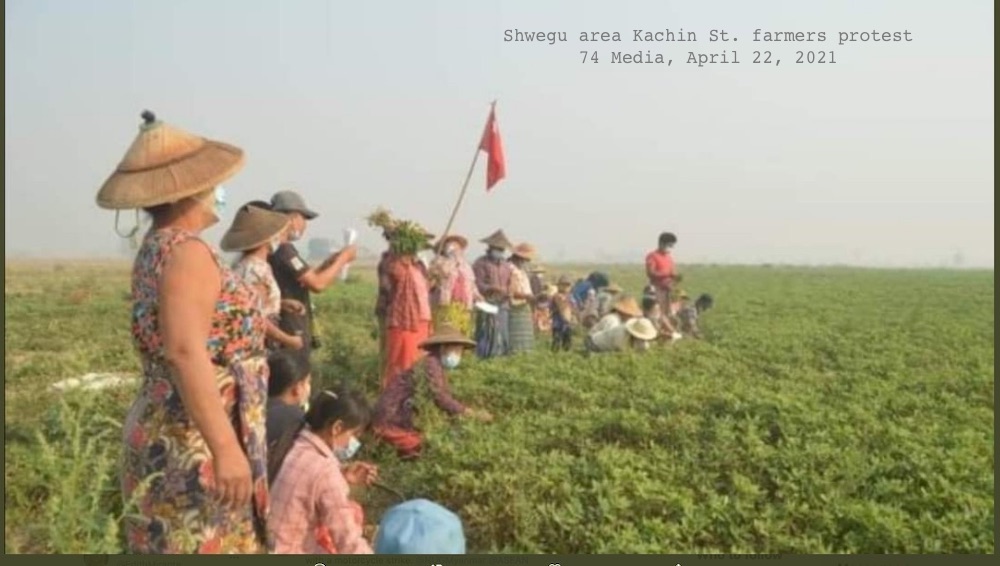 " title="1. This (May Day) History Thread is about Agricultural Workers& #39; Uprisings in Burma (Myanmar) which has a long background of peasant rebellions. With workforce est. 70% agriculture employed rural resistance to Feb. 1, 2021 coup is extremely significant. #WhatsHappeningInMyanmar https://abs.twimg.com/emoji/v2/... draggable="false" alt="🌿" title="Kräuter" aria-label="Emoji: Kräuter">" class="img-responsive" style="max-width:100%;"/>
" title="1. This (May Day) History Thread is about Agricultural Workers& #39; Uprisings in Burma (Myanmar) which has a long background of peasant rebellions. With workforce est. 70% agriculture employed rural resistance to Feb. 1, 2021 coup is extremely significant. #WhatsHappeningInMyanmar https://abs.twimg.com/emoji/v2/... draggable="false" alt="🌿" title="Kräuter" aria-label="Emoji: Kräuter">" class="img-responsive" style="max-width:100%;"/>

